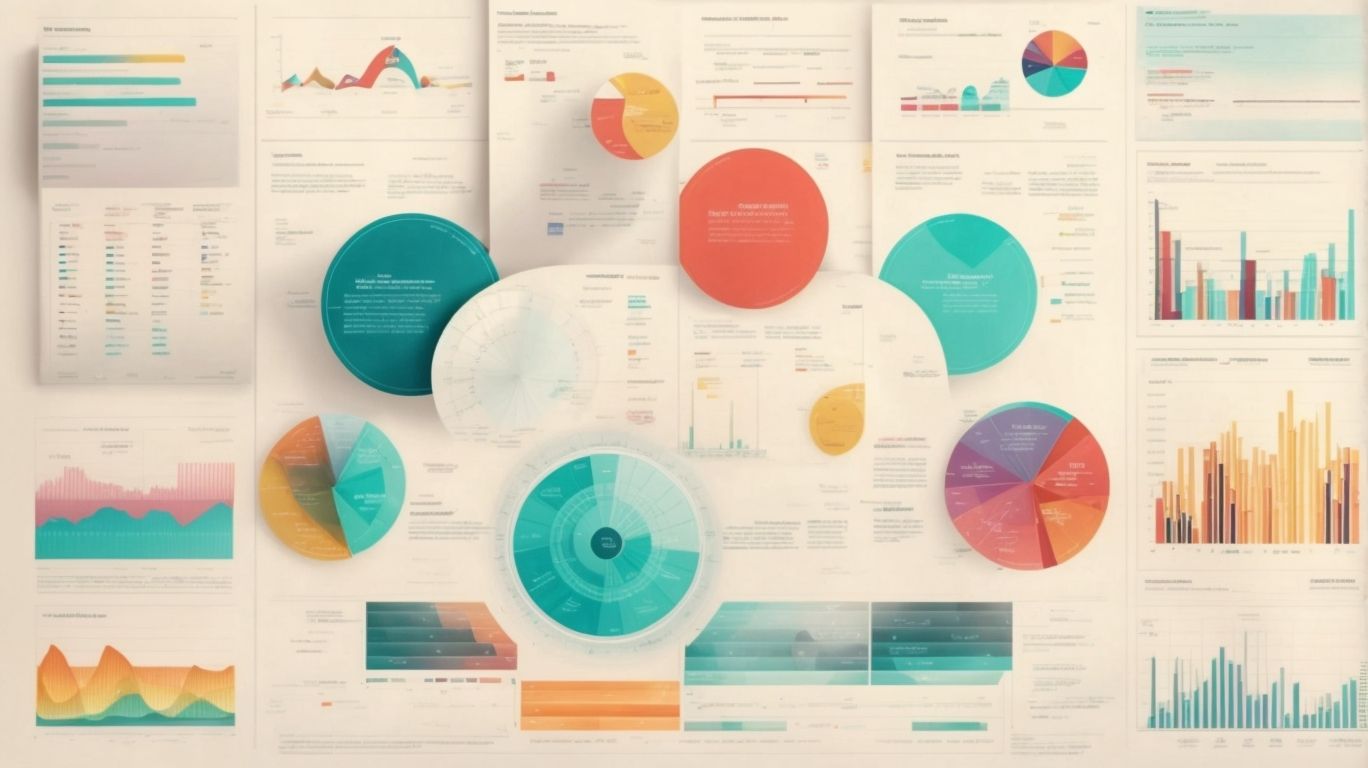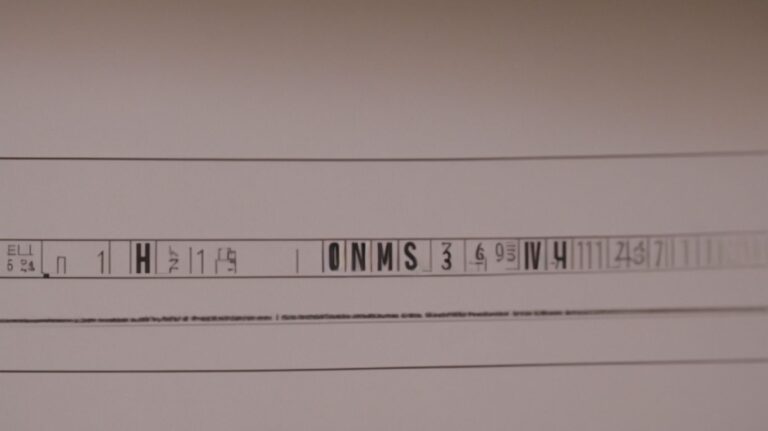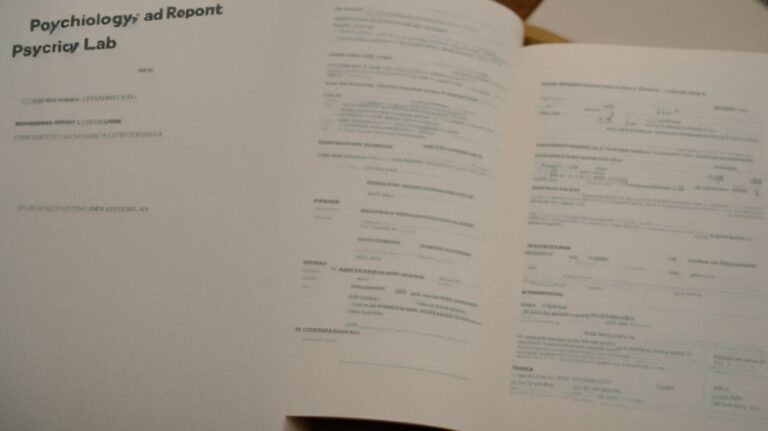Item analysis is a crucial process in psychology that involves the evaluation of test items to ensure their effectiveness in measuring the intended constructs.
In this article, we will explore the components of item analysis, its importance in psychology, and the benefits it offers. We will also delve into the different types of item analysis and the process of performing it.
We will discuss the limitations of item analysis and how they can impact the evaluation of test items. Join us as we delve into the intricacies of item analysis in psychology.
Contents
- 1 Key Takeaways:
- 2 What Is Item Analysis?
- 3 Why Is Item Analysis Important In Psychology?
- 4 How Is Item Analysis Performed?
- 5 What Are The Different Types Of Item Analysis?
- 6 What Are The Limitations Of Item Analysis?
- 7 Frequently Asked Questions
- 7.1 What is item analysis in psychology?
- 7.2 Why is item analysis important in psychological testing?
- 7.3 What are some common methods used in item analysis?
- 7.4 How is item difficulty determined in item analysis?
- 7.5 What is item discrimination in item analysis?
- 7.6 How can item analysis be used to improve test items?
Key Takeaways:
- Item analysis is a process used in psychology to evaluate test items and assess their effectiveness in measuring a particular construct.
- It is important because it helps in identifying poorly performing items, improving test reliability and validity, and providing insights into student performance.
- Item analysis involves data collection, cleaning and organizing, calculating item difficulty and discrimination, and interpreting results.
What Is Item Analysis?
Item analysis is a process used to evaluate the quality and effectiveness of test items in assessing students’ knowledge and skills across various educational domains.
Item analysis is a crucial aspect of educational assessment. Its purpose is to help educators determine the reliability and validity of each test item.
This is achieved by analyzing student responses and evaluating how well a question differentiates between high and low performing students.
By incorporating psychometric principles, item analysis ensures fair and accurate measurement of student performance, ultimately contributing to the validity and reliability of assessment data.
What Are The Components Of Item Analysis?
The components of item analysis encompass item difficulty, item discrimination, and the effectiveness of distractors, all of which contribute to the overall assessment score.
Item difficulty refers to the proportion of test takers who answer the item correctly. It provides valuable insight into the clarity and complexity of the item.
On the other hand, item discrimination evaluates the extent to which an item differentiates between high and low performers. This crucial aspect allows test developers to gauge the effectiveness of the item in distinguishing between students of varying abilities.
The impact of distractors can significantly influence assessment scores. Well-constructed distractors should be plausible and appealing to students.
They play a pivotal role in measuring the ability of the student to discern the correct response amidst plausible but incorrect options, thereby assessing their understanding of the subject matter.
Why Is Item Analysis Important In Psychology?
Item analysis holds significant importance in psychology as it enables professionals to gauge the effectiveness of assessment tools and ensure the accurate measurement of psychological constructs.
By examining individual test items, psychologists can identify items that may be ambiguous, poorly worded, or fail to effectively capture the intended psychological construct.
This process helps in refining and optimizing the assessment instruments, ultimately leading to more robust and reliable psychological measurements.
Through techniques such as item discrimination and item difficulty analysis, professionals gain valuable insights into the performance of each test item, contributing to the enhancement of the overall assessment’s psychometric properties.
What Are The Benefits Of Item Analysis?
The benefits of item analysis include enhancing the statistical reliability of assessment data, providing valuable measurement insights, and enableing teachers with data-driven decision-making abilities.
By analyzing individual test items, item analysis helps identify questions that may be ambiguous or ineffective, thereby improving the overall quality of the assessment.
It enables educators to gain a deeper understanding of student performance on specific content areas, which can inform instructional strategies and curriculum development.
Through the use of statistics and measurement theory, item analysis supports the continuous improvement of assessment tools, ensuring that they accurately measure what they intend to assess.
How Is Item Analysis Performed?
Item analysis is performed through a systematic process that involves collecting, cleaning, organizing data, calculating item difficulty and discrimination, and interpreting the results to make informed decisions about test items and student performance.
The first step in item analysis is the collection of test responses from students, ensuring that the data is accurate and complete. This is followed by the crucial task of cleaning the data, where any errors or inconsistencies are identified and rectified to ensure the validity of the analysis.
Once the data is clean, the next step involves calculating the item difficulty for each test question, which helps to gauge how challenging or easy the items are for the students.
The calculation of item discrimination measures how well a test item differentiates between high and low performing students.
After performing these calculations, the results are interpreted to determine the effectiveness of the test items. This assessment can help educators make necessary adjustments in their teaching strategies and improve students’ learning.
Collecting Data
The first step in item analysis involves collecting response data from the assessment to determine the frequency of each response option and assess the effectiveness of the test items.
Response frequency data can provide valuable insights into the performance of individual test items and overall assessment validity.
When collecting response data, it is essential to consider measurement considerations such as precision and accuracy to ensure the reliability of the results.
The assessment plays a crucial role in providing valuable data for analysis, offering educators and administrators actionable information for refining the assessment process and improving learning outcomes.
Cleaning And Organizing Data
Once the data is collected, the next step involves cleaning and organizing it using appropriate software and statistical techniques to prepare for item difficulty and discrimination analysis.
Data cleaning is crucial as it helps in identifying and correcting errors, inconsistencies, and missing values in the dataset. A well-organized dataset is essential for accurate analysis and interpretation.
Statistical software tools like SPSS, SAS, or R are commonly used for data cleaning and organization. These tools offer myriad functions for data manipulation, transformation, and validation.
Techniques such as standardization, transformation, and outlier detection play a vital role in ensuring the quality and reliability of the data. These steps are imperative before looking into item analysis to derive meaningful insights from the data.
Calculating Item Difficulty
Calculating item difficulty involves determining the proportion of students who answered the test item correctly, providing insights into the item’s level of challenge and suitability for classroom assessments.
This process is essential in educational assessment as it allows educators to gauge the appropriateness and effectiveness of the test items in evaluating student knowledge and skills.
By analyzing the difficulty, instructors can make informed decisions about curriculum adjustments and teaching strategies. It also plays a crucial role in maintaining the integrity and reliability of the assessment.
Understanding item difficulty helps in ensuring that assessments accurately reflect the learning objectives, guiding educators in designing targeted and equitable classroom activities.
Calculating Item Discrimination
Item discrimination calculation involves assessing the extent to which an item differentiates between high and low performing students, contributing to the measurement of assessment reliability and standard error.
This process is integral in educational measurement as reliable assessments are essential for making accurate inferences about students’ knowledge and skills.
The item discrimination index is calculated by comparing the proportion of correct responses for high-scoring students to low-scoring students.
A high discrimination index indicates that the item effectively differentiates between students, contributing to the accuracy of the assessment results. It helps to identify items that may need improvement or elimination to enhance the overall reliability of the assessment.
Accurate discrimination values play a crucial role in identifying and promoting differentiated learning approaches, tailoring assessments to students’ individual needs and abilities.
Interpreting Results
Interpreting the results of item analysis involves analyzing the item difficulty and discrimination metrics to make informed decisions about the test items’ effectiveness and their impact on student assessment data, enableing teachers with valuable measurement insights.
By conducting item analysis, teachers gain insights into how well their assessment instruments measure students’ knowledge and skills, allowing them to identify areas for improvement and ensure the reliability and validity of the assessments.
Understanding the item difficulty metrics helps educators adjust the difficulty levels of future tests, ensuring they appropriately challenge students without causing excessive frustration or confusion.
Interpreting item discrimination metrics aids in identifying questions that effectively differentiate between high and low-performing students, providing valuable information for refining assessments to better capture students’ true abilities.
What Are The Different Types Of Item Analysis?
Different types of item analysis include Classical Test Theory, Item Response Theory, and Differential Item Functioning, each offering unique methodologies to evaluate and enhance assessment items’ quality and effectiveness.
Classical Test Theory focuses on the overall test scores, variance, and reliability of assessment items.
It provides a general overview of a test-taker’s performance. In contrast, Item Response Theory utilizes complex mathematical models to assess a test-taker’s ability level based on their responses to individual items.
Differential Item Functioning is a method used to evaluate potential biases in test items. It examines whether certain items are more or less difficult for specific demographic or social groups, potentially indicating unfairness in the assessment.
Classical Test Theory
Classical Test Theory focuses on analyzing the relationship between observed test scores and true scores, providing insights into test reliability and the impact of measurement error on student assessments.
By understanding the principles of Classical Test Theory, educators and examiners can gain valuable information about the reliability of their assessments.
It enables them to differentiate between variability due to actual differences in knowledge and skills among students and variability due to measurement error or chance.
Classical Test Theory helps educators recognize the limitations of test scores and the potential impact of measurement error on students’ academic progress.
This highlights the importance of designing and administering tests with meticulous care to minimize errors and produce reliable results that reflect students’ true abilities.
Item Response Theory
Item Response Theory focuses on modeling individual item responses and estimating student abilities, providing advanced measurement insights and requiring specialized software for analysis.
The fundamental principle of Item Response Theory is to analyze the relationship between the likelihood of a correct response and the latent trait being measured. By understanding how different questions function, the theory enables educators to gain deeper insights into student performance.
This approach allows for the creation of more accurate assessments and the identification of items that may need revision or elimination.
The intricate calculations and data processing involved in this analysis necessitate the use of specialized software designed specifically for Item Response Theory, such as BILOG, MULTILOG, and PARSCALE.
Differential Item Functioning
Differential Item Functioning assesses the potential bias of test items across different student subgroups, ensuring fairness and equity in assessments and requiring robust statistical analysis methods.
By identifying variations in the performance of specific test items among different demographic groups, Differential Item Functioning (DIF) plays a vital role in evaluating the fairness and equity of assessments.
Through advanced statistical techniques such as item response theory and logistic regression, DIF allows for the identification of potential biases that may exist in test items, which is essential for maintaining the integrity of assessment tools.
It is crucial to address any observed DIF to uphold the ethical standards of assessment practices and ensure that students from diverse backgrounds are not disadvantaged by the test content.
DIF analysis provides valuable insights into the validity and reliability of assessment instruments, supporting the continuous improvement of educational evaluations.
What Are The Limitations Of Item Analysis?
Despite its benefits, item analysis has limitations, including its applicability primarily to multiple-choice questions, assumptions of item homogeneity, and the potential time-consuming nature of the process.
While item analysis can provide valuable insights into the effectiveness of test questions, it is important to acknowledge that its focus on multiple-choice questions may limit its ability to fully capture the range of important learning outcomes.
The assumptions of item homogeneity, which require that all test items are measuring the same construct, may not always hold true, particularly in more nuanced or open-ended assessment formats.
Conducting item analysis can be a time-consuming endeavor, especially when dealing with a large number of test items. This may pose challenges for educators and test developers who are aiming to efficiently improve the quality of their assessments.
Considering these limitations, it’s crucial to explore complementary approaches and strategies, such as qualitative item analysis and diverse assessment formats, to ensure comprehensive and reliable evaluation of student learning.
Limited To Multiple Choice Questions
One limitation of item analysis is its primary applicability to multiple-choice questions, limiting its effectiveness in assessing students’ comprehensive knowledge and constraining its utility for teachers in diverse assessment formats.
When considering educational evaluation, item analysis plays a crucial role in providing insights into the performance of students on multiple-choice assessments.
However, it falls short in capturing the depth of understanding that students may possess. This limitation poses challenges for educators who aim to gauge the holistic grasp of a topic or subject area.
As a result, teachers are hindered in their ability to formatively assess students using a variety of question types, such as open-ended, problem-solving, or project-based assessments.
Assumes Homogeneity Of Items
Item analysis assumes the homogeneity of test items, potentially overlooking the diverse skills and knowledge that students may possess, impacting the comprehensive assessment of educational outcomes.
Item analysis provides valuable insights into the performance of test items. However, its effectiveness may be limited by the assumption of homogeneity among students.
This means that students with varying skills and knowledge may perform differently on different items, potentially affecting the accuracy of the overall assessment.
As a result, the true depth of students’ understanding and proficiency may be obscured, which can have implications for educational decisions and interventions based on assessment data.
Educators should keep this in mind when interpreting results and designing instructional strategies.
Can Be Time-Consuming
Another limitation of item analysis is its potential time-consuming nature, which may pose challenges for teachers and educational professionals in efficiently analyzing and utilizing assessment data.
Conducting item analysis involves the careful examination of individual test questions, including their difficulty, discrimination, and effectiveness in measuring student learning.
This process demands meticulous attention to detail and robust statistical analysis, often leading to a considerable investment of time.
The time taken for item analysis directly impacts the overall assessment processing timeline, potentially delaying the generation of insightful reports and the implementation of targeted teaching strategies.
For educators, the time and effort required for comprehensive item analysis can be overwhelming amidst other teaching and administrative responsibilities.
Balancing thorough analysis with efficient use of time is, therefore, a considerable challenge within the realm of education.
Frequently Asked Questions
What is item analysis in psychology?
Item analysis in psychology is a process used to evaluate the effectiveness of individual test items in measuring a particular concept or skill. It involves analyzing the responses of a group of individuals to each item on a test in order to determine its difficulty level, discrimination power, and overall quality.
Why is item analysis important in psychological testing?
Item analysis is important in psychological testing because it helps ensure the accuracy and validity of test results. By examining individual items, researchers and practitioners can identify problematic questions, improve the overall quality of the test, and make more informed decisions based on the responses of test-takers.
What are some common methods used in item analysis?
There are several methods used in item analysis, including the point-biserial correlation, item-total correlation, and item difficulty index. These methods help determine the correlation between individual items and the total test score, as well as the difficulty level of each item.
How is item difficulty determined in item analysis?
Item difficulty is typically determined by calculating the percentage of test-takers who answered the item correctly. The higher the percentage, the easier the item is considered. For example, if 80% of test-takers answered a particular item correctly, it would be considered relatively easy.
What is item discrimination in item analysis?
Item discrimination in item analysis refers to the ability of an individual test item to differentiate between high-performing and low-performing test-takers. A highly discriminating item is one that is consistently answered correctly by high-performers and incorrectly by low-performers.
How can item analysis be used to improve test items?
Item analysis can be used to identify and eliminate problematic test items, such as those with low discrimination power or high ambiguity. By removing these items and replacing them with more effective ones, the overall quality and validity of the test can be improved.






